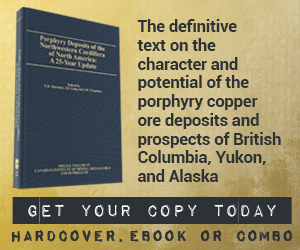Library Magazine Articles Making rare earth element disclosure transparent and compliant: Getting the most out of other organizations’ practices
Making rare earth element disclosure transparent and compliant: Getting the most out of other organizations’ practices
James Whyte - Feb 2011
When prices for rare earth metals rose sharply over the last five years, we saw junior mining companies take on rare earth projects and seek financing to explore them on the equity markets.
Such events would not normally create a compliance problem. But, in the rare earth business, there were a few new twists that made clear disclosure harder to do. One such twist was that there were just so many rare earths; another was that the term had been popularly stretched to cover other metals that were not rare earths at all. Rare earth elements are the lanthanide series (lanthanum through lutetium, elements 57-71 on that long-neglected row of the periodic table atop thorium, uranium and the Lawrence Labs synthetics), plus yttrium, which occurs with the lanthanides and shares most of their chemical characteristics.
A third twist was the wide variation in end-uses and prices for rare earth metals: some commanded low prices, some high, and others were so rare that they really did not have a market (a United States Geological Survey fact sheet on the subject remarked that “For many years, the main use of lutetium was the study of the behaviour of lutetium.”). In most rare earth projects, the majority of the revenue will come from the common rare earths (cerium and neodymium) and the rare, but marketable, ones (terbium, europium and dysprosium).
This variation in price and marketability means that transparent disclosure of exploration results and of mineral resources and reserves cannot rely on the “total rare earth element” and “total rare earth oxide” grades that have darkened junior mining news releases over the last few years. Some companies tried to clarify this by distinguishing “light” rare earths (commoner and cheaper) from “heavy” rare earths (rarer and more expensive). While this was better than disclosing totals alone, even the heavy rare earths had highly variable prices and marketability, and the light/heavy distinction raised another definition problem: stop at samarium? europium? and where do we put yttrium, which is atomically lighter?
Companies disclosing exploration information about rare earth drill intersections and resource estimates really are left with the basic principle that comes from CIM Standards and National Instrument 43-101: disclose all the relevant grades, element by element or oxide by oxide.
Moreover, where grades are disclosed as oxides, companies should take care to be consistent in using oxide grades throughout their disclosure. Jumping back and forth between oxide and element grades (or terminology) can confuse the reader.
We have seen disclosure that provides grades as total rare earths (expressed as elements or oxides) supplemented by a table of relative abundances of each of the rare earths in the total — analogous to the “prill split” data sometimes disclosed with platinum group element drill results. While providing more information than a straight total rare earth grade, the relative abundances force the reader to calculate grades that should have been disclosed in the first place. Rare earth analytical data, generated using X-ray fluorescence, atomic-emission spectrometry or mass spectrometry, is single-element data from the start, and providing the single-element grades is easier for the reader than working out relative abundances.
Sampling and analytical information is valuable context for rare earth disclosure. The metals are held in resistant mineral grains, often in coarse-grained rocks (or in beach sands, with all the sampling difficulty that placer deposits are famed for). With rare earths, the type of sampling (grab, chip, channel or drill core) and the type of analytical extraction (total or partial) take on more relevance than usual.
Rare earth prices can be informative when they accompany disclosure. If a company wants to provide market information, it should take care to make that information objective — long-term prices are more informative than recent price spikes — and it should provide market information only for the elements that have a reasonable prospect of being mined economically.
But remember that the prices themselves have only a slight connection to economic viability, value or potential return. A gross value calculation, or its near cousin, a value-per-kilogram figure for the contained rare earth elements, is misleading and inconsistent with NI 43-101. If you are concerned with giving investors information to make consistent comparisons with other rare earth projects, consider calculating an equivalent grade referenced to one of the rare earth elements that dominate your project’s economics.
The views expressed in this article are those of the author and do not necessarily represent the views of the OSC.
Author
James Whyte, senior geologist with the Ontario Securities Commission, is responsible for NI 43-101 technical reviews of public disclosure by mining and exploration companies based in Ontario.

.png)
